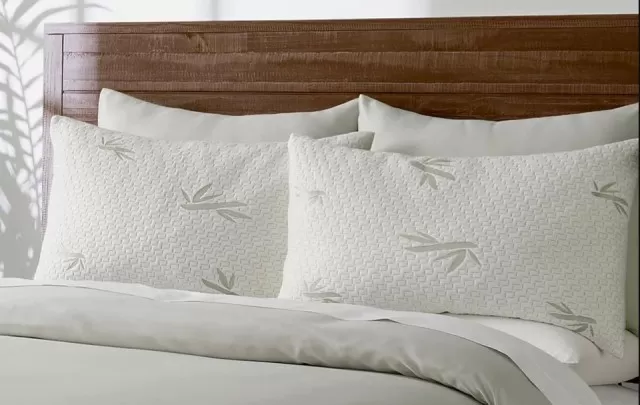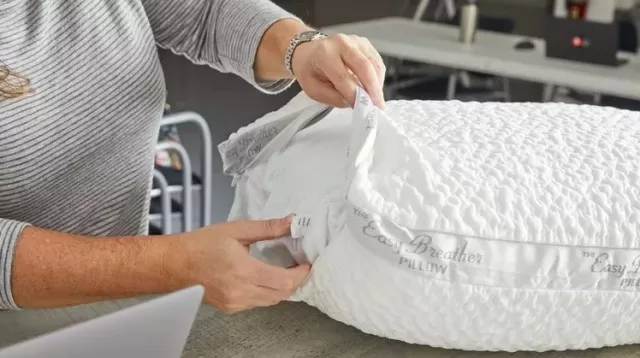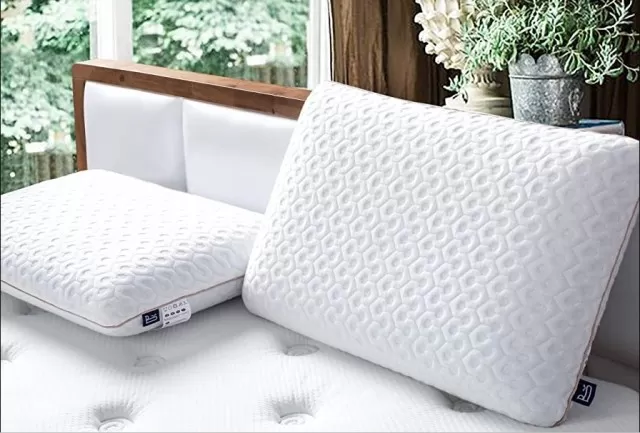Cleaning memory foam pillows is an important task, but the method of cleaning differs from traditional pillows.
While memory foam pillows cannot be washed in a washing machine due to the potential damage to the foam, there are alternative methods for cleaning them effectively.
One such method is using a Vacuum Cleaner to remove dust and debris from the surface of the memory foam pillow.
This can be done regularly to keep the pillow clean. Additionally, there are methods for stain removal and deep cleaning that are safe for memory foam pillows.
In this article, we will explore three cleaning methods for memory foam pillows and discuss the appropriate circumstances and frequency for each type of cleaning.
Deodorizing and Removing Allergens from Memory Foam Pillows

When it comes to cleaning pillows, the primary goal is to eliminate build-up that causes odors and allergies while maintaining the pillow’s loft.
While washing is one method, vacuuming with an upholstery attachment is an effective way to remove dust, dust mites, body soils, pet dander, and other small particles from memory foam pillows.
To deodorize the pillow, sprinkle it with baking soda and let it sit for one hour before vacuuming.
This step helps neutralize odors, but it is only necessary as needed. Regular vacuuming of memory foam pillows should be done every 1-3 months to keep them free of allergens and maintain a fresh smell.
Treat Stains on Memory Foam Pillows

Spot treating, also known as spot cleaning, involves treating specific stains in targeted areas rather than washing the entire pillow.
This should be done as needed, approximately every 1-3 months, as part of regular maintenance or deeper cleaning.
What You’ll Need:
Stain treatment product and/or liquid laundry detergent
Light-colored cloth
Laundry brush (optional)
Step 1: Identify the Stain.
Remove pillowcases and protectors and identify the specific stain that needs to be treated.
Stains on pillows usually consist of body soils such as sweat, saliva, or blood, which are protein-based stains. Enzymatic stain removers are effective for treating protein stains.
If you’re unsure of the stain’s nature, liquid laundry detergent can be used as a general-purpose stain remover for spot treatment.
Step 2: Apply the Stain.
Remover Apply a small amount of the stain remover to a damp, light-colored cloth instead of directly onto the pillow.
Using a white or light-colored cloth prevents dye transfer. For deep stains, you may need to use a laundry brush.
Step 3: Dab the Stain.
Use the cloth to gently dab the stain remover onto the stained area.
Blot the stain until it disappears, reapplying the stain treatment to the cloth as needed. Avoid scrubbing the stain, as this can push it deeper into the pillow’s fibers or cause it to spread.
Step 4: Rinse the Stain.
Remover After removing the stain, rinse the cloth thoroughly and gently dab the treated area with Clean Water to remove any residue from the stain remover.
Step 5: Ensure Complete Drying.
Allow the pillow to dry completely before putting the pillowcase back on and returning it to the bed.
Ensure that the pillow is fully dry to prevent any potential moisture-related issues.
Thoroughly Clean a Memory Foam Pillow

Before deep cleaning a memory foam pillow, it’s important to check the care label for specific instructions.
Typically, memory foam pillows require hand washing instead of machine washing to prevent damage. Memory foam pillows are known for their hypoallergenic properties, which help prevent the growth of mildew, dust mites, and other allergens.
As a result, deep cleaning is not needed as frequently as with other pillow types. It is generally recommended to deep clean a memory foam pillow every 6-12 months.
Here are the steps to deep clean a memory foam pillow:
What You’ll Need:
Liquid laundry detergent
Stain treatment product (optional)
Clean, dry towels
Step 1: Prepare a Large Basin with Water and Detergent.
Choose a suitable space, such as a bathtub, kitchen or utility sink, or a large bucket, where you can fully submerge the pillow in water.
Fill the basin with lukewarm water and add 1 tablespoon of liquid laundry detergent. Avoid using excessive detergent as it will make rinsing the pillow more difficult.
Step 2: Submerge the Pillow.
Remove any pillowcases or coverings and apply a stain treatment product if necessary for specific stains.
Then, submerge the pillow in the detergent solution. Use your hands to gently massage the pillow while it’s submerged, allowing the detergent solution to penetrate the pillow’s fibers.
Step 3: Agitate the Pillow.
Once the pillow is fully saturated, lift it out of the basin and squeeze out the Soapy Water.
Return the pillow to the basin and massage it again. Repeat this process 2-3 times to ensure thorough cleaning.
Step 4: Rinse the Pillow.
Rinse the pillow carefully with clean water.
If you used a bathtub or sink, rinse it under the faucet. While rinsing, gently squeeze the pillow to remove any remaining soapy water.
Continue rinsing until the water coming out of the pillow runs clear.
Step 5: Dry the Pillow.
In the basin, press down on the pillow to remove excess water.
Then, place the pillow on a clean, dry towel. Cover the pillow with another towel and gently apply pressure to remove additional water.
Lay the pillow flat to air dry, preferably outdoors in the sun if possible. Ensure the pillow is completely dry before putting the pillowcase or protector back on and returning it to the bed.
*The information is for reference only.